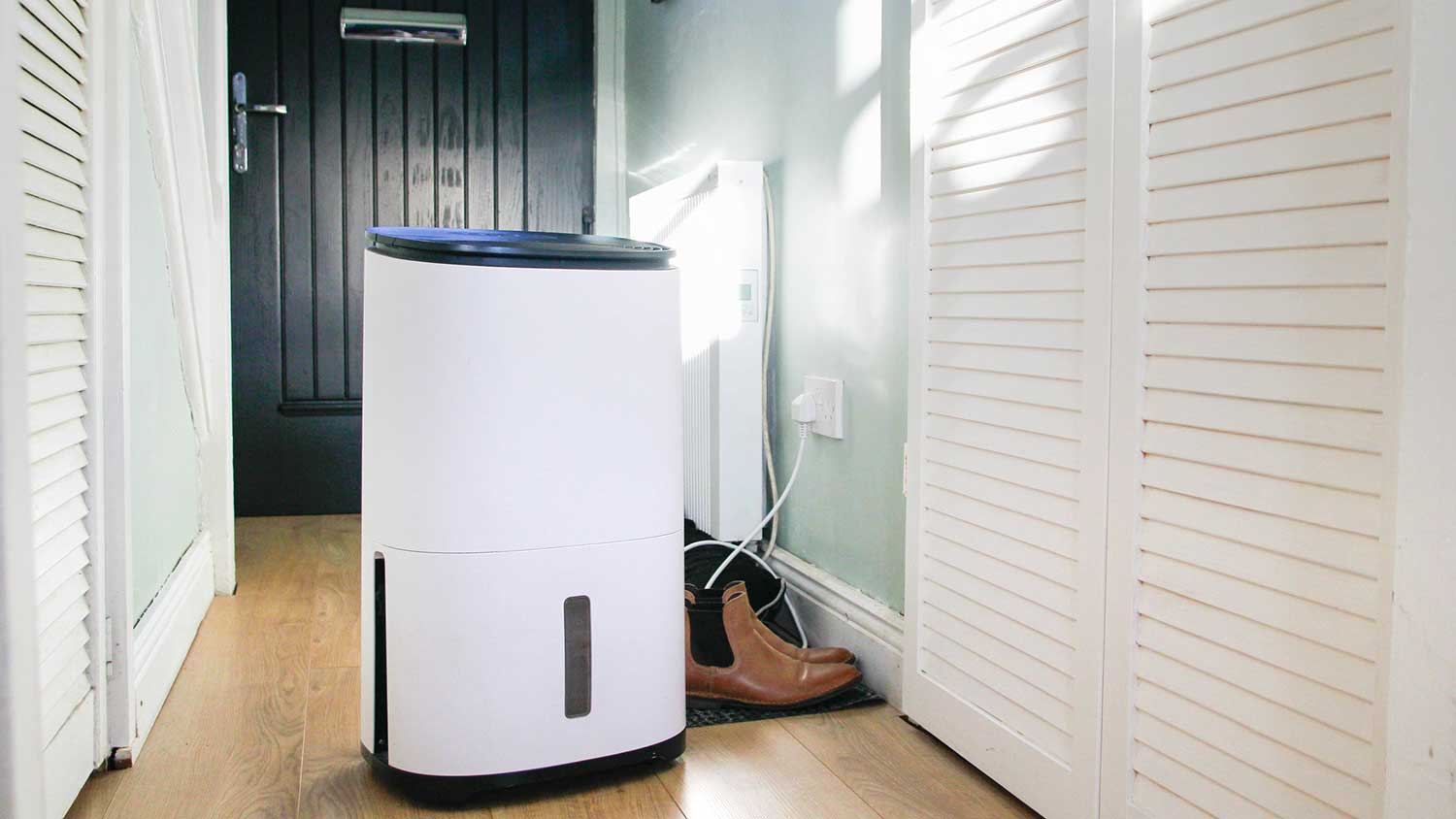What Is a Duct Booster Fan and How Does It Work?
Boost uneven temperatures right out the window


Installing a duct booster fan within pre-existing ductwork can improve airflow.
Most of these fans require professional installation, which costs $100 to $600.
While fans can boost reduced airflow, they will not help with the underlying cause.
Sometimes, HVAC systems struggle to regulate the temperature of an entire home, leading to hot or cold spots. Before replacing the entire system, many pros recommend installing a duct booster fan. These devices are installed within the ductwork and help push air throughout the home. So what is a duct booster fan, exactly? Here’s what you need to know about booster fans and the advantages they bring to the table.
What Are Duct Booster Fans?
Duct booster fans, sometimes called inline booster fans, are exactly what they sound like: fans installed within existing ductwork to give the airflow a little boost. Once installed, a booster fan should eliminate uneven temperatures throughout the home, shuttling warm and cold air to every nook and cranny. If you’ve kept up on HVAC maintenance, including duct cleaning, and still experience uneven temperatures in certain rooms, it could be time to give one of these fans a go.
How Does a Duct Booster Fan Work?

Once you install a standard duct booster fan in the ductwork, it helps direct airflow throughout the ducts. These can be attached to any vent or register throughout the home but work best when placed near the room experiencing airflow issues. They include an integrated motor that plugs into a wall unit or hardwires into the furnace. Some have added control options, like a dedicated thermostat or speed adjusters.
Consider it like a Wi-Fi extender, only for hot and cold air. In most cases, they require professional installation. Certain designs, however, allow for DIY booster installation.
What Are the Different Types of Duct Booster Fans?
There are two types of duct booster fans, each with its own benefits.
Inline Booster Fans
Inline booster fans are the more powerful option and require more complex installation inside the ductwork, often replacing a small section. They are best for homes with a large network of ducts that require more airflow power. They are quiet and efficient, offering a budget-friendly alternative to a full HVAC system replacement.
Inline booster fans range in price from $30 to $200, plus the cost of professional installation. Don’t try to DIY this one because the job requires an electrician and someone to expose and reseal a section of ductwork.
Register Booster Fans
Register fans attach to a vent where you’re experiencing uneven temperatures and work to push the air out and distribute it more efficiently. Register fans aren’t as powerful or widely effective as inline boosters, but they'll make a difference if you only have one problem area.
These fans are more budget-friendly at $30 to $80. Since they plug into the wall, they make for a perfectly suitable DIY project; no electrician required.
How Much Does It Cost to Install a Booster Fan?
Installing a duct booster fan costs anywhere from $100 to $600 or more, depending on several factors. The fan itself ranges from $30 to $200, and HVAC labor costs $50 to $100 per hour. Adding an inline booster fan requires the work of a local duct installer, but could also demand an electrician. As with most jobs involving ductwork, accessibility is a key concern. If your pro can easily get to a section of ductwork, the labor price decreases.
What Are the Downsides to Installing a Duct Booster Fan?
The only downside? Duct booster fans are a band-aid, not a real fix. They’re a good solution for assisting an old home with a complicated network of ducts but will do nothing to address any underlying issues impacting the HVAC system. Leaks, clogs, and worn-out systems will continue to deteriorate if you don’t take care of the problem.
In fact, if your system has a serious issue requiring repairs, adding a duct booster fan could actually do more harm than good. This is because the fan could overwork the equipment. Get a system inspection before installing the fan. Once your pro ensures the ducts don’t have any leaks and that the equipment is operating at peak efficiency, they’ll give you the go ahead.





- Furnace Repair
- Air Conditioning Repair
- HVAC Repairs
- Furnace Installation
- Wood & Pellet Stove Repair
- Dehumidifier & Humidifier Repair
- Heat Pump Companies
- Swamp Cooler Repair
- Wood Stove Services
- HVAC Companies
- Commercial A/C Repair
- Geothermal Installation
- Air Conditioning Installation
- Boiler Repair
- 24 Hour Furnace Repair
- Geothermal Repair
- Heat Pump Repair
- Humidifier Installation
- Thermostat Repair
- Thermostat Installation
- Nest Installation
- Heating & Cooling
- Heating Repair
- Furnace Cleaning
- Furnace Tune-Up
- HVAC Technicians
- Subcontractors
- Furnace Maintenance
- Plumbing & Heating Companies
- Wood Stove Inspection
- Mini Split Installation
- Wall Heater Repair
- Duct Installers










